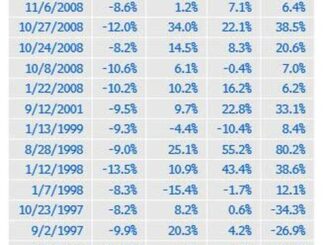
SEPTEMBER 12, 2022
tags: China
By Paul Homewood
China may add more new coal-fired power plants in the next few years than previously expected after a spate of economy-pinching power crunches.
The world’s biggest energy user is expected to add 270 gigawatts of thermal capacity in the five years through 2025, China Energy Engineering Corp., the country’s top energy engineering conglomerate, said in an online briefing on Thursday. That would be more than the 100 to 200 gigawatts estimated in 2020 by a senior researcher at State Grid of China Corp. Energy Research Institute.
China has vowed to start reducing coal use from 2026 and said any new coal power plants will only be used to support intermittent renewable energy. Still, the country is seeking increased energy security after recent supply crunches have forced power cuts to factories. Most recently, a blistering heatwave and drought forced factories to halt in some regions last month, crimping output of materials such as lithium and aluminum.
“The plan if materialized will reverse the declining trend of coal additions,” said Lara Dong, an analyst with S&P Global Commodity Insights. “It will mitigate the power crunch risk, especially in the load centers located in central and eastern China.”
To be sure, no official announcements have been made on capacity additions, and it’s in the engineering firm’s interest to jockey for a larger amount of potential coal power plants to work on.
About 320 gigawatts of thermal power plants were added between 2006-2010, but the pace has slowed ever since then. In recent years, utilities have shifted their focus to cheaper and cleaner renewables. China has about 320 gigawatts of wind and solar projects in the pipeline right now, compared to 144 gigawatts in July 2021, according to S&P.
China may remain the world’s largest coal consumer and the expansion of coal plants might thwart its climate goals, Bloomberg Intelligent analyst Michelle Leung said in a note this month. The country put more new coal plants into operation last year than the rest of the world combined, and its proposed new coal mines account for almost a third of the global total, she said.
The growth of China’s coal fleet is mainly focused on firming capacity in the power system and “will neither change China’s climate commitment nor challenge the achievement of peaking carbon emissions before 2030,” according to S&P’s Dong.
While the energy transition helped China’s clean-power capacity to overtake coal for the first time in 2021, coal remained the main fuel for generation, accounting for 60% of total power output, China Electricity Council data show. China may install as much as 100 gigawatts of solar power and 56 gigawatts of wind power this year, and the country aims to have 1,200 gigawatts of renewable power by 2030.
If this target goes ahead, it will be highly significant, because it reverses the declining trend in construction seen over the last decade.
Bloomberg, being Bloomberg, are still trying to promote their renewable energy agenda, claiming that any new coal power plants will only be used to support intermittent renewable energy. This is laughable – you cannot turn coal plants on and off, just to natch the vagaries of the wind. All of these new coal plants will be used for baseload, with wind and solar power topping up.
Two thirds of electricity demand growth is supplied by thermal (nearly all coal) power, which still generates 67% of total supply, against the 11% coming from wind/solar. China’s economic growth will continue to rely copious amounts of coal-fired power for decades to come.
https://chinaenergyportal.org/en/2021-electricity-other-energy-statistics-preliminary/
Bloomberg also say that China may have 1200 GW of renewable power by 2030, a figure which presumably does not include hydro. But it already has 634 GW of wind and solar capacity, so the target is not very challenging.
Even if total demand does not increase, 1200 GW would only supply about an extra 500 TWh a year, increasing wind/solar share from 11% to 17%.
But as already noted, economic growth will continue to drive electricity demand ever higher.



